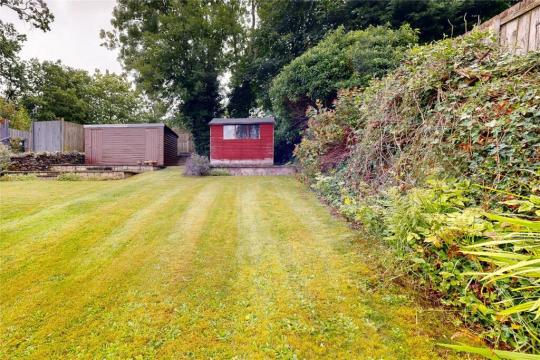#pv solar
Explore tagged Tumblr posts
Text


Anhui Xingtong Technology Co., Ltd. Successfully Connects 3.1MW Photovoltaic Project to the Grid.
Anhui, China – July 12, 2024 – Anhui Xingtong Technology Co., Ltd. is proud to announce the successful grid connection of its 3.1MW photovoltaic project. The project, located in Anhui, marks a significant milestone in our commitment to sustainable energy and environmental stewardship.
The newly installed photovoltaic panels, as seen in the attached image, cover the rooftops of our main buildings, harnessing the power of the sun to generate clean and renewable energy. This project is expected to generate approximately 3.72GWh of electricity annually, significantly reducing our carbon footprint and contributing to the local energy supply.
“We are thrilled to have completed this project and to see it successfully connected to the grid,” said Henry, CEO at Anhui Xingtong Technology Co., Ltd. “This achievement reflects our dedication to innovation and sustainability. By leveraging solar power, we are not only reducing our operational costs but also supporting China's national goals for renewable energy development.”
The 3.1MW photovoltaic project utilizes advanced solar technology, ensuring high efficiency and reliability. The electricity generated will be used to power our operations, with excess energy fed back into the grid, benefiting the wider community. This initiative is part of our broader strategy to integrate renewable energy solutions into our business operations and reduce reliance on fossil fuels.
Anhui Xingtong Technology Co., Ltd. would like to extend its gratitude to all partners, contractors, and employees who contributed to the successful completion of this project. We are excited to continue our journey towards a greener future and to explore further opportunities for renewable energy integration.
For more information about our photovoltaic project and other sustainability initiatives, please visit our website www.xingtong-tech.com or contact [email protected].
0 notes
Text

Discover the benefits of cable tray management for PV projects! From safety and efficiency to cost savings and scalability, optimize your solar installation with organized cable routing.
0 notes
Text
African poverty is partly a consequence of energy poverty. In every other continent the vast majority of people have access to electricity. In Africa 600m people, 43% of the total, cannot readily light their homes or charge their phones. And those who nominally have grid electricity find it as reliable as a Scottish summer. More than three-quarters of African firms experience outages; two-fifths say electricity is the main constraint on their business.
If other sub-Saharan African countries had enjoyed power as reliable as South Africa’s from 1995 to 2007, then the continent’s rate of real GDP growth per person would have been two percentage points higher, more than doubling the actual rate, according to one academic paper. Since then South Africa has also had erratic electricity. So-called “load-shedding” is probably the main reason why the economy has shrunk in four of the past eight quarters.
Solar power is increasingly seen as the solution. Last year Africa installed a record amount of photovoltaic (PV) capacity (though this still made up just 1% of the total added worldwide), notes the African Solar Industry Association (AFSIA), a trade group. Globally most solar PV is built by utilities, but in Africa 65% of new capacity over the past two years has come from large firms contracting directly with developers. These deals are part of a decentralised revolution that could be of huge benefit to African economies.
Ground zero for the revolution is South Africa. Last year saw a record number of blackouts imposed by Eskom, the state-run utility, whose dysfunctional coal-fired power stations regularly break down or operate at far below capacity. Fortunately, as load-shedding was peaking, the costs of solar systems were plummeting.
Between 2019 and 2023 the cost of panels fell by 15%, having already declined by almost 90% in the 2010s. Meanwhile battery storage systems now cost about half as much as five years ago. Industrial users pay 20-40% less per unit when buying electricity from private project developers than on the cheapest Eskom tariff.
In the past two calendar years the amount of solar capacity in South Africa rose from 2.8GW to 7.8GW, notes AFSIA, excluding that installed on the roofs of suburban homes. All together South Africa’s solar capacity could now be almost a fifth of that of Eskom’s coal-fired power stations (albeit those still have a higher “capacity factor”, or ability to produce electricity around the clock). The growth of solar is a key reason why there has been less load-shedding in 2024...
Over the past decade the number of startups providing “distributed renewable energy” (DRE) has grown at a clip. Industry estimates suggest that more than 400m Africans get electricity from solar home systems and that more than ten times as many “mini-grids”, most of which use solar, were built in 2016-20 than in the preceding five years. In Kenya DRE firms employ more than six times as many people as the largest utility. In Nigeria they have created almost as many jobs as the oil and gas industry.
“The future is an extremely distributed system to an extent that people haven’t fully grasped,” argues Matthew Tilleard of CrossBoundary Group, a firm whose customers range from large businesses to hitherto unconnected consumers. “It’s going to happen here in Africa first and most consequentially.”
Ignite, which operates in nine African countries, has products that include a basic panel that powers three light bulbs and a phone charger, as well as solar-powered irrigation pumps, stoves and internet routers, and industrial systems. Customers use mobile money to “unlock” a pay-as-you-go meter.
Yariv Cohen, Ignite’s CEO, reckons that the typical $3 per month spent by consumers is less than what they previously paid for kerosene and at phone-charging kiosks. He describes how farmers are more productive because they do not have to get home before dark and children are getting better test scores because they study under bulbs. One family in Rwanda used to keep their two cows in their house because they feared rustlers might come in the dark; now the cattle snooze al fresco under an outside lamp and the family gets more sleep.
...That is one eye-catching aspect of Africa’s solar revolution. But most of the continent is undergoing a more subtle—and significant—experiment in decentralised, commercially driven solar power. It is a trend that could both transform African economies and offer lessons to the rest of the world."
-via The Economist, June 18, 2024. Paragraph breaks added.
#one of the biggest stories of this century is going to be the story of the African Renaissance#I promise you#well preferably they'll come up with a non-European term for it lol#but trust me it WILL happen and it will be SO good to see#africa#south africa#nigeria#kenya#solar#solar power#solar panels#solar pv#energy#clean energy#poverty#electrification#distributed energy#electricity#infrastructure#hope#solarpunk#good news#solar age#<- making that a tag now
416 notes
·
View notes
Text

125 notes
·
View notes
Text









1 bedroom house for sale on Perth Road, Gilmerton
Asking price: £99,000
#PH7 3LZ#strathview#crieff#gilmerton#1 bedroom#house#garden#perthshire#solar panels#solar pv#renewable energy#scotlis
4 notes
·
View notes
Text
6 notes
·
View notes
Text
#solar panels#renewable#renewable resources#solar cell#solar panel#solar energy#solar cells#instrumentation#green energy#automation#energy storage#wind ensemble#renewable energy#solar power#solar system#solarpower#solar pv#solar products
4 notes
·
View notes
Text

Hello,this is Eva,we have LiFePo4 battery stock in Europe,and sold at lowest price
2 notes
·
View notes
Text
The "Tea-Photovoltaic Complementary" photovoltaic power generation project developed by Anhui Xingtong Technology Co., Ltd: We use the tea garden area to install photovoltaic modules to generate electricity. It not only injects strong clean power into the local energy supply, but also lays a solid foundation for the local development of green energy and low-carbon economy.
Any need, please contact us at [email protected]
0 notes
Text
Playing around with "solarpunk without photovoltaics".
Nearly all domestic energy use is to produce heat. Heating and hot water of course, but appliances as well mostly turn electricity to heat -- washers, dryers, dishwashers etc. Rather than do some convulated system where we generate electricity and then use a heat pump to turn it to heat, we could just collect the heat directly and use that.
Heat is fairly easy to store. Insulate a tank of rock or water and you're set. Far less resource intensive than batteries, with a system that can be maintained by local mechanics and built out of scrap. Community self reliance, rather than dependence on globocorps with long supply chains.
Cheap heat might favour communal areas. You can cook food with 60-80c heat (sous vide), but installing such systems for individual homes might not be worth it. For a cafeteria however... Same goes for boiling vessels for hot drinks. A heat pump based system to produce near boiling water would make little sense in a home, but if it's shared between a few hundred people it might.
By focusing so much on electricity production, we've missed what we need the electricity *for*.
#solarpunk#solar thermal#solar thermal punk#plausible futures#solar thermal is more punk than solar PV#solar energy#sustainability
7 notes
·
View notes
Text
Virto Core- PV Solar Design Software
Tired of tackling challenging topography and tedious manual labor on solar sites? Automate manual operations, evaluate site-specific circumstances, and do structural analysis with Virto.CORE is an ideal PV Solar Design Software for planning and designing large-scale solar projects more effectively. No prior 3D or CAD knowledge is required to use Virto.CORE. It enables companies to automate the whole design process extended with customizable features on static load calculations, ballast calculations, Eurocode calculations, wind and snow loads, bill of materials, and reporting. A comprehensive and user-friendly web-based framework utilized by producers, wholesalers, and distributors of mounting systems. Request a free trial, or schedule a demo.
0 notes
Photo

Akuo Energy begins construction at 180MWp Santas solar plant in Portugal French renewable power company Akuo Energy has started construction at its 180MWp Santas solar PV facility in Portugal. https://www.pv-tech.org/akuo-energy-begins-construction-at-180mwp-santas-solar-plant-in-portugal/
2 notes
·
View notes
Photo

Heute hat uns die Sonne eine neue Höchstleistung beschert: über 82 kWh Solarstrom. 😁
3 notes
·
View notes
Text
King Coal will disappear... And King Solar will replace it
Solar photovotaïc (PV) is growing exponentially and will one day replace King Coal. A look at the numbers.
If you listen to mainstream media pundits, you may be missing it : a real energy revolution is taking place as renewables are ramping up and up and are on an exponential curve. King Coal is still the first source of electricity, but this will be very temporary as wealthy nations are ditching it as fast as they can to the benefit or wind and solar.These are good news for our climate and our common…

View On WordPress
5 notes
·
View notes

